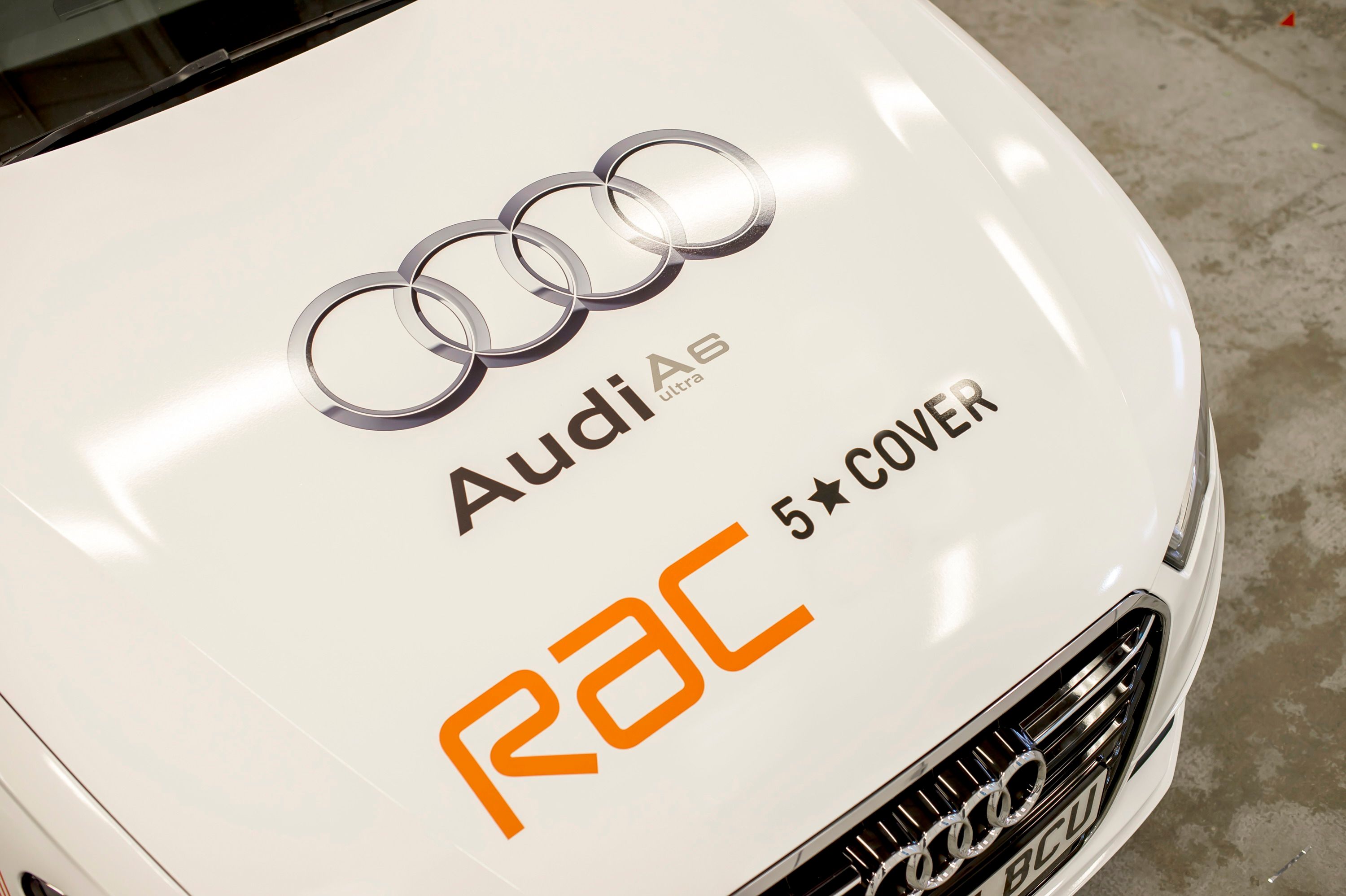Audi->ke14 and the RAC (a U.K.-based automotive services company) have set a new official Guinness World Record->ke1948 by driving a diesel-powered A6->ke934 TDI Ultra to 14 different countries on a single tank of gas.
The A6 was unmodified for the journey, exceeding its factory-rated 67 mpg with an impressive average of 75.9 mpg, seeing a total of 1,158.9 miles before requiring a fill-up. The car comes standard with low rolling-resistance tires and a 73-liter (19.28-gallon) fuel tank.
At the helm was auto journalist Andrew Frankel and British racing driver Rebecca Jackson, who collaborated to set the new record in a 28-hour non-stop journey across Europe. The pair started in the Netherlands on June 9th at 9:48 AM (GMT) and ended in Hungary on June 10th at 12:44 PM (GMT), passing through Belgium, Luxembourg, France, Switzerland, Lichtenstein, Austria, Germany, Italy, Slovenia, Croatia, Bosnia, and Serbia in the process. The route was planned by the RAC to avoid things like mountain gradients and congested urban areas.
However, the trip wasn’t without its challenges, with several unplanned detours required due to heavy traffic caused by an accident and a closed tunnel.
Frankel said he was delighted to be part of the effort, and that he hopes the new record will stand for some time to come. However, the challenge was much harder than he expected, requiring a constant attention to the car’s velocity, with max efficiency available at an average speed of 50 mph. “In order to do this you have to be fully aware of what’s going on around you and anticipate what could happen with the traffic ahead,” he said.
For Jackson, the stint was a diversion from her normal gig as a flat-out performance driver, but she thought it was nonetheless something that the RAC and Audi should be proud of. “This was an amazing event and a very different long-distance driving challenge to what I’m doing next year when I compete in the 24 Hours of Le Mans 2016,” she said.
Continue reading for the full story.
Why it matters
At first glance, it could seem a bit odd to employ a race car->ke148 driver for some hypermiling, but the closer you look, the more sense it makes. To get the absolute economy from a car’s engine, the driver must employ a variety of techniques that can be honed on the track. These include the conservation of momentum (as in no brakes), an ability to anticipate spots down the road that could slow you down, and buttery-smooth control inputs. Anyone who gives anything less than constant throttle is wasting fuel, a point not lost on Jackson, who said, “Most people won’t think of me in terms of fuel-efficient driving, but if you’ve ever tried to handle a racing car in the wet then you’ll know how important smooth control is,” prior to setting off on the record-breaking attempt.
Audi has been hyping its diesel technology a lot lately. For example, the automaker recently announced that it set a new lap record around the German Sachsenring race track using its performance-oriented 2015 Audi RS 5 TDI Competition concept vehicle. What’s most interesting about the car is its use of an electrically driven compressor that boosts power and sharpens throttle response from its twin-turbo 3.0-liter V-6, which Audi indicates could see future applications in production vehicles.
It’s all a continuation of the German automaker’s intention to develop oil burners that combine the contradictory purposes of high efficiency and performance.
Audi has been working towards such a goal for some time. One of the best examples comes from the world of endurance racing, where the marque championed the 2006 Audi R10 TDI as the first diesel-powered vehicle to win both the 24 Hours of Le Mans->ke1591 and the 12 Hours of Sebring. It’s the perfect venue for such development, as the big power will get you in front of the pack, while solid economy will keep you there as your competitors dive into the pits for a refuel.
As the world looks to have its cake and eat it too when it comes to combining sporting fun with low fuel consumption, Audi is forging a way forward for diesels. Are oil burners the way to go, or will the electric vehicle be the platform to beat?
While I believe electrification is inevitable, I think diesels will provide a fantastic solution in the interim. Battery tech still has a way to go before it can compete with the convenience and accessibility of a fill-up at the pump, while the infrastructure supporting diesel power is already in place. And while the U.S. is only now integrating more diesels into passenger vehicles, the rest of the world has already proven its viability.
What’s most interesting is a combination of the two techs, such as with that previously mentioned electric compressor on the RS 5 TDI. Will several hundred mpg be possible from a diesel hybrid, and if so, how will it perform?
My bet is Audi is already cooking up an answer.
2014 Audi A6 TDI Ultra
If you’re gonna plant your butt in a car seat for 28 hours straight, it might as well come equipped with the finest German engineering, such as can be found in the A6 TDI Ultra. The Ultra moniker comes from the model’s intentions to combine practical usability with top-range fuel economy, and given the above-featured record-setting run, the result clearly works. The A6 TDI Ultra uses a 2.0-liter four-banger to make 190 horsepower and 295 pound-feet of torque, which is good enough for 8.2 seconds to 60. Not exactly fast, but driven frugally, you can get over 75 mpg and visit pretty much the majority of Europe on a single tank of gas.
Read our full review of the 2014 model here.

